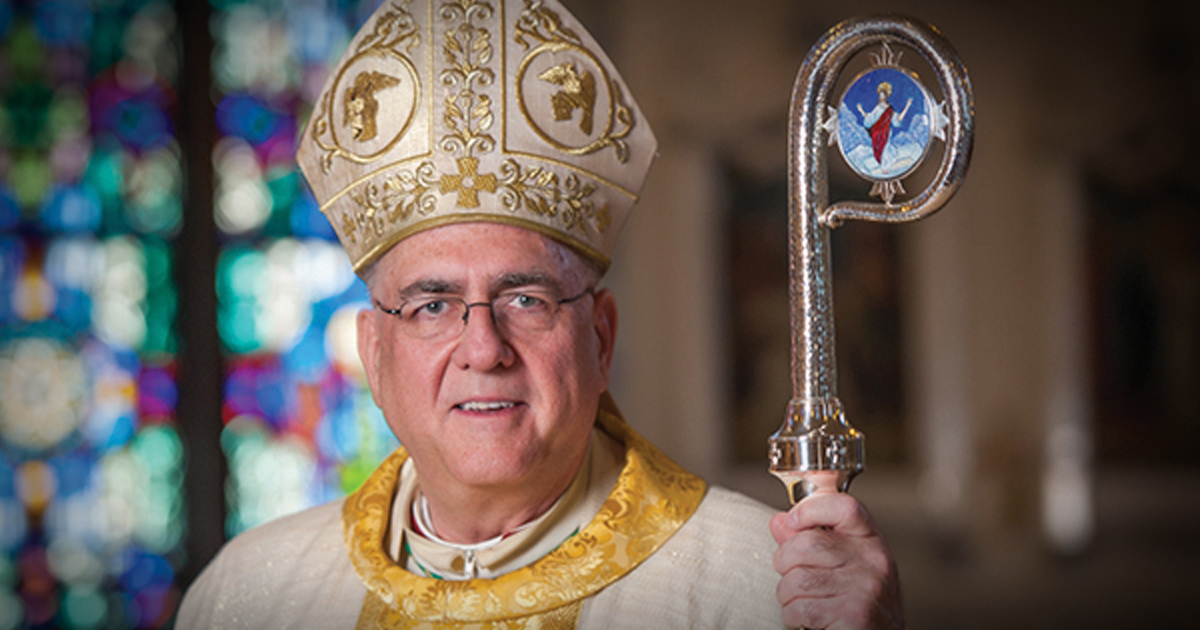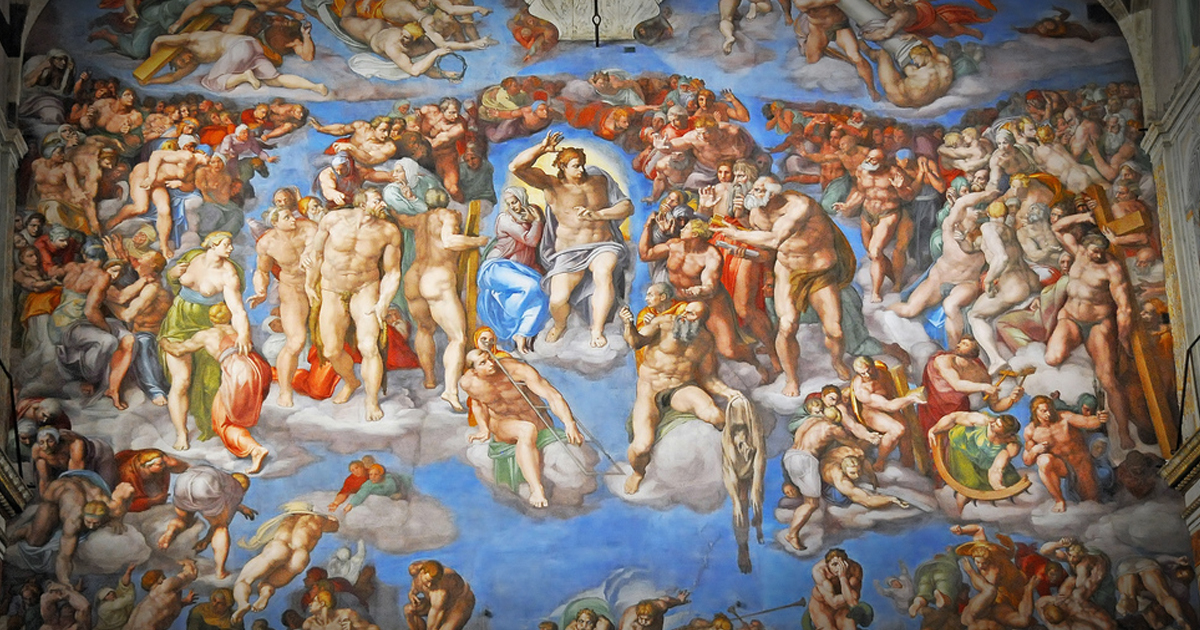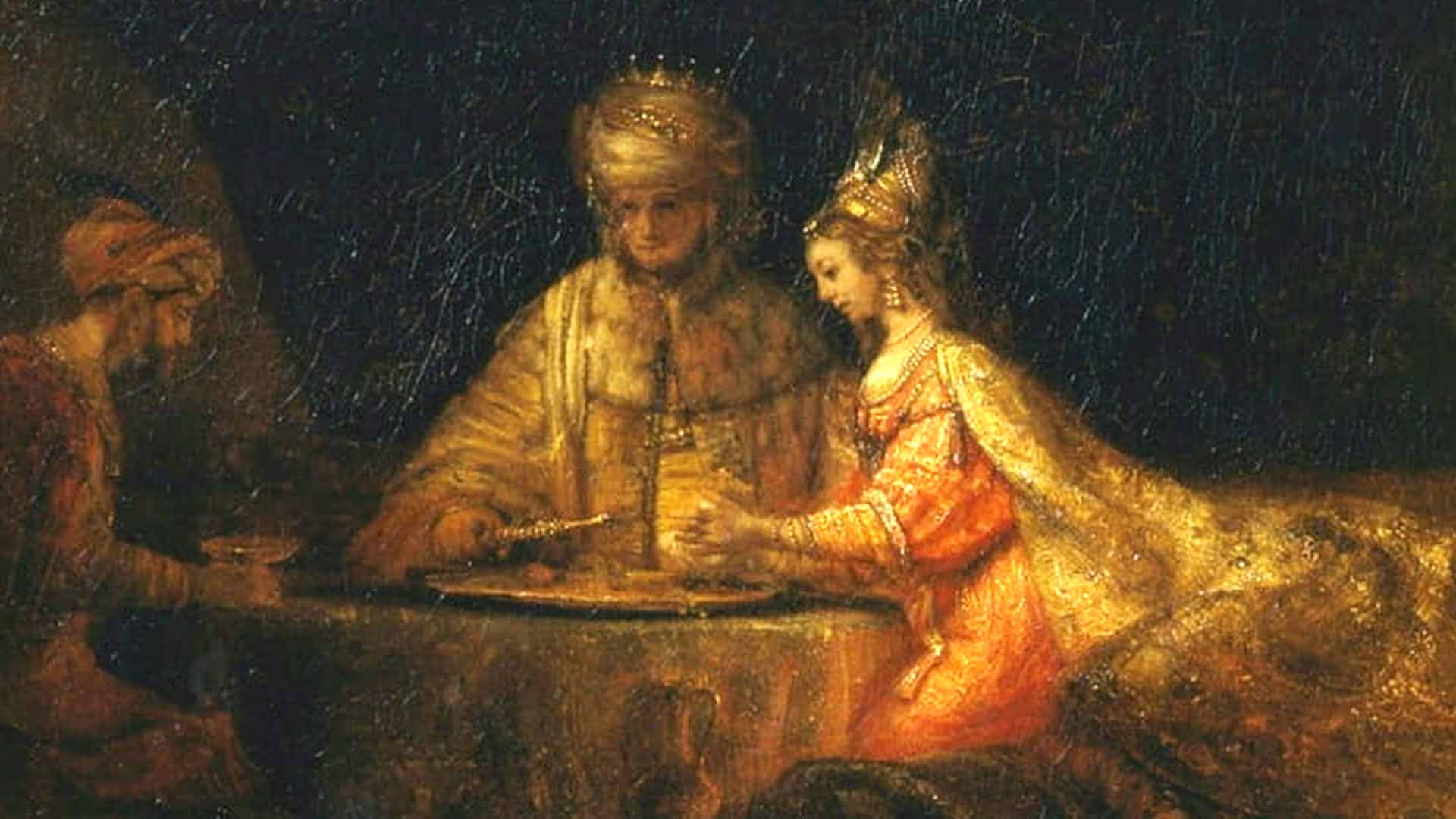Pope Francis Commits a Sin of Idolatry with Pachamama?

Did Pope Francis Commit the Sin of Idolatry with Regard to Pachamama?
It is certainly no secret as to what happened before and during the 2019 Synod of bishops for the Pan-Amazon Region that has come to be known as “the Amazon Synod.” This was a synod to consider the continued evangelization of the entire region of the Amazon. And a beautiful post-synodal document, the Apostolic Exhortation, Querida Amazonia, became the magisterial fruit of the synod. I will quote from it below.
Unfortunately, what has come to be known as “the Pachamama controversy” cast a shadow over the entire synod. Two days before the Synod, a tree-planting ceremony at the Vatican Gardens included two statues of the goddess “Pachamama” complete with ceremonial prayers offered to “her” by indigenous people dressed in traditional Amazonian garb. Then, a few days into the Synod, those same two statues were placed in a side-chapel at the Vatican where Catholic activist Alexander Tschuggel entered very early the next morning, stole them, and cast them into the Tiber.
Many good and devout Catholics agree with Mr. Tschuggel that this was “idolatry.” And ultimately, the fault, many say, must be laid at the feet of Pope Francis. The proverbial “buck” certainly stops with the pope. In fact, Tschuggel has become somewhat of a hero in those circles. But what is the truth of the matter here? Was this truly “idolatry?” Let’s examine the facts.
Not Guilty!
First of all, I would argue that the charge of idolatry against the pope is absolutely unfounded. CCC 2113 declares:
Idolatry consists in divinizing what is not God. Man commits idolatry whenever he honors and reveres a creature in place of God, whether this be gods or demons (for example, satanism), power, pleasure, race, ancestors, the state, money, etc. Jesus says, “You cannot serve God and mammon.”
According to the Vatican, there was no worship of any pagan God here. No one present at the Vatican during the controversial events that I have been able to find reference to, believed or believes 1. that “Pachamama” is a goddess. And 2. Worshipped “Pachamama” as a goddess. Evidently, “Pachamama,” a goddess in the aboriginal religion of the region, has become a cultural symbol among Christians of the region that represents “mother earth, motherhood in general, fertility, wisdom and life.” For 2,000 years in the Catholic Church symbols among various peoples the Church brings to Christ have been taken up into legitimate Catholic worship and piety. This is nothing new. As St. John Henry Newman said in his famous “Essay on the Development of Christian Doctrine” (Chapter 8, Para. 2, Sect. 6):
We are told in various ways by Eusebius, that Constantine, in order to recommend the new religion to the heathen, transferred into it the outward ornaments to which they had been accustomed in their own. It is not necessary to go into a subject which the diligence of Protestant writers has made familiar to most of us. The use of temples, and these dedicated to particular saints, and ornamented on occasions with branches of trees; incense, lamps, and candles; votive offerings on recovery from illness; holy water; asylums; holydays and seasons, use of calendars, processions, blessings on the fields; sacerdotal vestments, the tonsure, the ring in marriage, turning to the East, images at a later date, perhaps the ecclesiastical chant, and the Kyrie Eleison, are all of pagan origin, and sanctified by their adoption into the Church.
James 1:17 informs us, “Every good endowment and every perfect gift is from above, coming down from the Father of lights.” Rooted in this God-inspired idea, we Catholics have a very long and storied history of bringing into our religion whatever is truly good and beneficial from the various cultures we evangelize. That is one reason why we have 8 Major Rites in the Church, and 22 churches. When considering specifically the religious symbols and beliefs of cultures we evangelize, Nostra Aetate, from Vatican II, provides:
The Catholic Church rejects nothing that is true and holy in these religions. She regards with sincere reverence those ways of conduct and of life, those precepts and teachings which, though differing in many aspects from the ones she holds and sets forth, nonetheless often reflect a ray of that Truth which enlightens all men. Indeed, she proclaims, and ever must proclaim Christ “the way, the truth, and the life” (John 14:6), in whom men may find the fullness of religious life, in whom God has reconciled all things to Himself.
The Church, therefore, exhorts her sons, that through dialogue and collaboration with the followers of other religions, carried out with prudence and love and in witness to the Christian faith and life, they recognize, preserve, and promote the good things, spiritual and moral, as well as the socio-cultural values found among these men.
The Wisdom of St. John, St. Paul, Pope Francis, Genesis, and Pope St. John Paul II
St. John did not hesitate to use a pagan symbol—some call it “baptizing” the Stoic notion of the word (Gr. – logos), applying it to Christ in John 1:1-3, 14. “In the beginning was the Word…” For the Stoics, “the logos” represented the absolute substratum from which all things come and toward which all things are ordered. But it was more of an impersonal “force” a la Star Wars than the personal God that we know as Christians. Yet this “heretical” understanding of the logos common in the first century did not stop St. John from using the term as a symbol for Jesus Christ. This was not a symbol that Jesus used of himself in the Gospels.
Is the worship of the Logos idolatry? Of course not.
St. Paul did not hesitate to use two pagan authors in Epimenides and Aratus in Acts 17:28-29, quoting Epimenides’s Cretica, “In him, we live, move and have our being,” and Aratus, from his Phaenomena, 5: “For indeed, we are the offspring of God.” Now, these men were pagans and had a very different view of “God” than a Christian does. When Aratus, for example, speaks of “God,” he is talking about Zeus. And he was a pantheist. Most likely, Epimenides would have been a pantheist as well. But the point is, St. Paul “baptizes” both of these men’s sayings.
Is quoting Aratus’s line: “… we are the offspring of God” heresy? After all, as a pantheist, Aratus believed this to mean we are God! And the same could be said of the quote from Epimenides. Of course it was not heresy for St. Paul to “baptize” these symbols of Aratus and Epimenides for Christian use. Remember: language is nothing more than communication by symbol. All words are symbols.
Pope Francis, in his Apostolic Exhortation, Querida Amazonia, 78-79, explains himself better than I could. So let me present to you, Pope Francis in his own words:
A process of inculturation involving not only individuals but also peoples demands a respectful and understanding love for those peoples. This process has already begun in much of the Amazon region. More than forty years ago, the bishops of the Peruvian Amazon pointed out that in many of the groups present in that region, those to be evangelized, shaped by a varied and changing culture, have been “initially evangelized”. As a result, they possess “certain features of popular Catholicism that, perhaps originally introduced by pastoral workers, are now something that the people have made their own, even changing their meaning and handing them down from generation to generation”. Let us not be quick to describe as superstition or paganism certain religious practices that arise spontaneously from the life of peoples. Rather, we ought to know how to distinguish the wheat growing alongside the tares, for “popular piety can enable us to see how the faith, once received, becomes embodied in a culture and is constantly passed on”.
79. It is possible to take up an indigenous symbol in some way, without necessarily considering it as idolatry. A myth charged with spiritual meaning can be used to advantage and not always considered a pagan error. Some religious festivals have a sacred meaning and are occasions for gathering and fraternity, albeit in need of a gradual process of purification or maturation. A missionary of souls will try to discover the legitimate needs and concerns that seek an outlet in at times imperfect, partial or mistaken religious expressions, and will attempt to respond to them with an inculturated spirituality.
The early chapters of Genesis are another excellent example of how the inspired authors of Scripture use popular symbols of the day in which they were written in order to communicate essential, and in this case, inspired truth. Some scholars call this “didactic fiction.” Take, for example, the seven 24-hour “days” of creation. The text itself indicates this was not intended to be taken in a strict literal sense. This becomes apparent when we discover that the sun and moon were not created until the fourth “day.” Most likely, this is a parallel to the “seven tablets” across which the Enuma Elish records Babylonian cosmology. Man is created on the sixth “day” in Genesis. The “creation” of man is recorded on the “sixth tablet” in the Enuma Elish. And those who get hung up on talking snakes—thinking this must be defended as literal—are missing the point. The slaying of the dragon is an essential component of the creation of man in the cosmology of the Enuma Elish. The crushing of the head of the “dragon,” or “serpent” becomes crucial to the new creation and coming of the Messiah in Genesis 3 (see also Rev. 12:9).
These and other symbols used in Genesis are similar to the popular cosmology of the Babylonians (the Enuma Elisha) that represented the beliefs of the empire that dominated the world, and had conquered Israel, in the 6th century B.C. when the Torah was being finally redacted. Basically, the Torah was the definitive response to the errors of Babylonian cosmology. And it used images and parallels from Babylonian cosmology to make the point. I highly recommend then-Cardinal Ratzinger’s excellent book, In the Beginning, for a detailed exposition on this point.
But in essence, in using the symbol of “Pachamama,” the Holy Father, and all those involved with the Amazon Synod, are not guilty of “idolatry.” In fact, this is nothing new. As Pope Francis mentioned above, the use of this and other symbols among the Christians of the Amazon goes back long before the Synod. Pope St. John Paul II spoke of these same peoples during an Apostolic Journey to Venezuela, Ecuador, Peru, Trinidad, and Tobago. In a homily on February 3, 1985, in Cuzco, Peru, Pope St. John Paul said:
The Church, in effect, welcomes the cultures of all peoples. In them there are always the traces and seeds of the Word of God. Thus your ancestors, when paying tribute to the land (Mama Pacha), did nothing but acknowledge the goodness of God and his benefactor presence, which gave them food through the land they cultivated.
I can see how someone may disagree with what the Holy Father allowed here as a matter of prudence, but to call the pope an idolator is over the top and wrong-headed. I believe the way it was handled was imprudent. It should have been explained from the beginning. I personally had major problems with what happened until I read the Holy Father’s explanation and dug deeper on the matter.
Wisdom Personified in Scripture
What was helpful for me in understanding Pope Francis and the Synod was when I considered “Pachamama” as a symbol of “wisdom” and “fertility,” or “new life.” In Proverbs 8-9:1, we find a fascinating antecedent. We discover the symbol of “wisdom” personified:
Does not wisdom call, does not understanding raise her voice? 2 On the heights beside the way, in the paths she takes her stand; 3 beside the gates in front of the town, at the entrance of the portals she cries aloud: 4 “To you, O men, I call, and my cry is to the sons of men. 5 O simple ones, learn prudence; O foolish men, pay attention. 6 Hear, for I will speak noble things, and from my lips will come what is right; 7 for my mouth will utter truth; wickedness is an abomination to my lips. 8 All the words of my mouth are righteous; there is nothing twisted or crooked in them. 9 They are all straight to him who understands and right to those who find knowledge. 10 Take my instruction instead of silver, and knowledge rather than choice gold; 11 for wisdom is better than jewels, and all that you may desire cannot compare with her. 12 I, wisdom, dwell in prudence, and I find knowledge and discretion. 13 The fear of the Lord is hatred of evil. Pride and arrogance and the way of evil and perverted speech I hate. 14 I have counsel and sound wisdom, I have insight, I have strength. 15 By me kings reign, and rulers decree what is just; 16 by me princes rule, and nobles govern[b] the earth. 17 I love those who love me, and those who seek me diligently find me. 18 Riches and honor are with me, enduring wealth and prosperity. 19 My fruit is better than gold, even fine gold, and my yield than choice silver. 20 I walk in the way of righteousness, in the paths of justice, 21 endowing with wealth those who love me, and filling their treasuries. 22 The Lord created me at the beginning of his work, the first of his acts of old. 23 Ages ago I was set up, at the first, before the beginning of the earth. 24 When there were no depths I was brought forth, when there were no springs abounding with water. 25 Before the mountains had been shaped, before the hills, I was brought forth; 26 before he had made the earth with its fields, or the first of the dust of the world. 27 When he established the heavens, I was there, when he drew a circle on the face of the deep, 28 when he made firm the skies above, when he established[f] the fountains of the deep, 29 when he assigned to the sea its limit, so that the waters might not transgress his command, when he marked out the foundations of the earth, 30 then I was beside him, like a master workman; and I was daily his delight, rejoicing before him always, 31 rejoicing in his inhabited world and delighting in the sons of men. 32 And now, my sons, listen to me: happy are those who keep my ways. 33 Hear instruction and be wise, and do not neglect it. 34 Happy is the man who listens to me, watching daily at my gates, waiting beside my doors. 35 For he who finds me finds life and obtains favor from the Lord; 36 but he who misses me injures himself; all who hate me love death.” 9:1: Wisdom has built her house, she has set up her seven pillars.
What does “wisdom” symbolize here? Well, there are multiple levels of meaning. At times, Wisdom seems to be eternal. “When [God] established the heavens, I was there…” Thus, “wisdom” here can be a symbol of our divine and eternal Blessed Lord. “In the beginning was Wisdom…” It can symbolize the eternal “begetting” of the Second Person of the Blessed Trinity.
On another level, inasmuch as “wisdom” seems also to be revealed as “created,” it could refer to the created human nature of Christ as the eternal paradigm and final cause of all creation. In fact, in I Cor. 1:30, the New Testament refers to our Blessed and Incarnate Lord as “wisdom” itself.
Or, on a tertiary level, wisdom could refer to the Blessed Mother. There is much I could say to that! But because that discussion would be beyond the scope of what I can do here, I will assign homework. Consider CCC 721 as a launching point to understand the perennial idea in Catholic theology and liturgy of Mary as a fulfillment of the many “wisdom” texts in the Old Testament.
But most importantly for the task at hand, “wisdom” texts like the above-cited, just as we find with much of Sacred Scripture, is not a matter of a single valid interpretation. The wisdom texts in particular—and much of Sacred Scripture in general—are polyvalent by divine design.
Wisdom in Wisdom
In Wisdom 7:21-30, we get an even more developed look at the symbol of “wisdom” personified:
I learned both what is secret and what is manifest, 22 for wisdom, the fashioner of all things, taught me. For in her there is a spirit that is intelligent, holy, unique, manifold, subtle, mobile, clear, unpolluted, distinct, invulnerable, loving the good, keen, irresistible, 23 beneficent, humane, steadfast, sure, free from anxiety, all-powerful, overseeing all, and penetrating through all spirits that are intelligent and pure and most subtle. 24 For wisdom is more mobile than any motion; because of her pureness she pervades and penetrates all things. 25 For she is a breath of the power of God, and a pure emanation of the glory of the Almighty; therefore nothing defiled gains entrance into her. 26 For she is a reflection of eternal light, a spotless mirror of the working of God, and an image of his goodness. 27 Though she is but one, she can do all things, and while remaining in herself, she renews all things; in every generation she passes into holy souls and makes them friends of God, and prophets; 28 for God loves nothing so much as the man who lives with wisdom. 29 For she is more beautiful than the sun, and excels every constellation of the stars. Compared with the light she is found to be superior, 30 for it is succeeded by the night, but against wisdom evil does not prevail.
Here, we see wisdom more explicitly revealed as divine, “the fashioner of all things… all-powerful, overseeing all… she can do all things… she renews all things…” But, at the same time, she is hinted at as being glorious, but something less than God, “for it is succeeded by the night…” So again, we see with ease a polyvalent understanding to be possible. This is not the “worship” of wisdom as wisdom, but when wisdom is understood as a symbol of the eternal wisdom the object of devotion transcends the mere symbol to the one being symbolized.
The Wisdom of Sirach
Sirach 51:13-21, gives us an even more developed revelation concerning the idea of a symbol, such as “wisdom” being an object of petition, devotion, honor, and delight:
While I was still young, before I went on my travels, I sought wisdom openly in my prayer. Before the temple I asked for her, and I will search for her to the last. From blossom to ripening grape my heart delighted in her; my foot entered upon the straight path; from my youth I followed her steps… I spread out my hands to the heavens, and lamented my ignorance of her. I directed my soul to her, and through purification I found her… My heart was stirred to seek her, therefore I have gained a good possession.
As the Council of Nicea II declared concerning the use of representational art in the life of the Church and in what can be applied to the use of any and all symbols in the Church:
Indeed, the honor paid to an image traverses it, reaching the model, and he who venerates the image, venerates the person represented in that image. So it is that the teaching of our holy fathers is strengthened, namely, the tradition of the catholic church which has received the gospel from one end of the earth to the other.
Thus, the symbol of “Pachamama” can also be seen as a symbol for the people of the Amazon region that could have fulfillments in our Blessed Lord, the Church our Mother, or, of course, in the Blessed Mother. And when you consider, as Pope Francis said above, that these people had already been evangelized some forty years plus prior to the Synod, and that this symbol apparently had already been changed among them into a deeper and more Christianized meaning, to say Pope Francis was guilty of “idolatry” is just wrong, if not irresponsible.






